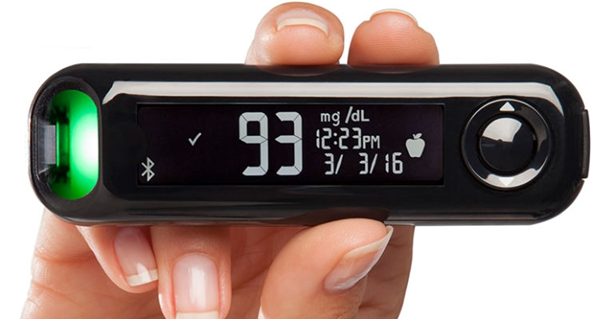We recently opened up our Data-Driven Fasting app so people could try it without joining a Data-Driven Fasting challenge.
We were eager to see more people use the DDF app to identify their premeal blood glucose trigger and use it to guide when and what they eat to optimise their metabolic health.
Tom, a new Optimiser, recently tried the DDF app and left a glowing review of his experience in our Optimising Nutrition Community.
It was too cool not to share, so here it is!
Over to Tom:
I am a newbie and used the Data Driven Fasting (DDF) app for the first time. Since I am not diabetic, this was my first time using a glucose meter.
It’s intriguing how well chasing your trigger works, even if your blood glucose is in the ‘normal range’. The glucose meter and the methodology have been a revelation to me.
The table below shows the results of my two-week adventure.
| Initial trigger | 88 mg/dL (4.9 mmol/L) |
| Weight loss | – 9.8 lbs (4.5 kg) |
| Body fat change | – 2.0% |
| Waist | – 2.25 inches (5.7 cm) |
| Water | – 1.4% |
| Glucose | – 9 mg/dL (0.5 mmol/L) |
These remarkable results are not from starving myself, radically changing what I ate, or exercising like a mad fiend. You can’t out-exercise a bad diet!
Instead, I ate a wide variety of meat, fish, fowl, vegetables, fruit like berries, nuts, seeds, some dairy, baked products, and even had the occasional wine or beer. I just continued on as normal. I do eat a lot of fresh vegetables and salads.
I was intrigued by the glucose testing methodology and numbers. Thus, after the baselining period, I continued to test my waking BG, pre-meal BG, 1-hour post-meal BG, and sometimes even BG before bed.
In addition, I kept a logbook to try and understand what was happening. Let me highlight a few of my discoveries:
- I tested myself to see what happened when I ‘fell off the wagon’, which certainly affected me. Yes, it set me back several days due to weight gain!
- I found out that morning coffees affect my blood glucose (BG). Instead of the BG normally falling as it would without food, my blood glucose falls much more slowly from my waking BG when I drink caffeinated coffee. With coffee, my BG may fall by only 0.2 mmol/L (4 mg/dL) while I continue fasting to lunch.
- I also noted that even leisure exercise like riding a bike for only half an hour raised my BG by 0.5 mmol/L (9 mg/dL).
Whether I ate once, twice, or three times a day, there were no days without eating food.
A couple of times, I snacked into the evening hours after dinner. Hey, even guinea pigs get to have fun!
Based on my observations and guidance throughout the two weeks I used the DDF app, I changed:
- the timing of when I ate,
- the amount of what I ate,
- the combination of foods that I ate, and
- the number of meals that I ate per day.
I consciously tried to increase my protein intake at each meal, whether in the form of a solid, whole food protein or protein powders mixed into a drink or a berry bowl.
I hope this information can help a number of you. Let me know if you have any questions!
Congratulations, Tom! We’re always thrilled to hear people’s great results from using their glucose to guide what and when they eat. You can find a ton of other DDF results and stories here.
How Does It Work?
As Tom mentioned, this approach doesn’t require extended fasting or deprivation. Instead, it’s kind of the opposite!
DDF simply guides you to use your blood glucose to help you give your body what it needs, precisely when it needs it. It’s not really ‘fasting’, but rather glucose-guided eating!
While there is a lot to learn if you want to dive in, the basics are pretty simple to apply.
If you’re interested, the table below summarises the guidance given by the DDF app.
| Glucose | Guidance |
| Post-meal, BG rises by 30 mg/dL (1.6 mmol/dL) or more after eating | You’ve overfilled your glucose fuel tank! Next time, eat less of the food or meal you just consumed or eliminate it from your repertoire. |
| Significantly above trigger | Wait! You don’t need to eat yet; you have plenty of fuel on board! |
| Just above trigger | Ideally, wait to eat. If you’re particularly hungry, prioritise nutrients and protein and consume less energy from carbs and fat. |
| Just below trigger | Eat ‘normally’. |
| Significantly below trigger | Prioritise enough carbohydrates to bring glucose back to your normal range so you can quickly alleviate extreme hunger from low glucose. |
If you have any questions, feel free to ask below in the comments!
When you try the DDF app, you’ll also get access to all our optimised food lists, NutriBooster recipes, and our self-guided Data Driven Fasting program to begin making better food choices based on your blood glucose.
Why not click here to try the DDF app now for yourself?



